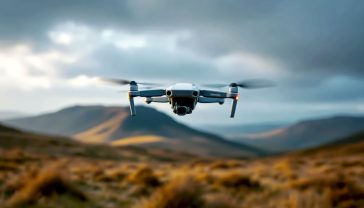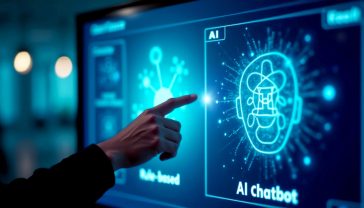The Guide to the GNU General Public License (GPL): What It Is and Why It Matters
Our definitive guide explains the GNU GPL in simple terms. Discover its history, the concept of copyleft, and how it powers the tech you use every day in the UK.

This post may contain affiliate links. If you make a purchase through these links, we may earn a commission at no additional cost to you.
Ever used Android, surfed the web with Firefox, or powered up a website with WordPress? If you have, you’ve bumped into one of the most important ideas in modern technology, probably without even realising it. It’s called the GNU General Public License, or the GPL for short.
It sounds a bit complicated, like something only tech wizards would care about. But honestly, it’s a revolutionary concept that has shaped the digital world we all live in. It’s not just a dusty legal document; it’s a declaration of freedom for software. It’s the reason why so much of the internet is built on shared, open, and collaborative technology.
Think of it like this: imagine a recipe for the most amazing Victoria sponge cake. A normal recipe might say you can bake the cake, but you can’t sell it or share the recipe with your friends. The GPL is like a recipe that says, “Go on, bake this cake. Sell it if you want. Tweak the recipe to make it a chocolate cake. The only rule is, if you share your new chocolate cake recipe, you have to let others do the same.”
This simple but powerful idea—the freedom to use, change, and share—is the heart of the GPL. In this guide, we’re going to unravel what it is, where it came from, and why this bit of legal text has become the quiet engine behind so much of the technology we use every day, right here in the UK and across the globe.
What on Earth Is a Software License?
Before we dive into the GPL, let’s get our heads around what a software license actually is. It’s simpler than it sounds.
Whenever you use a piece of software—whether it’s Microsoft Word, a game on your phone, or the operating system on your laptop—you don’t actually own it. Instead, you’re given permission to use it under certain rules. Those rules are laid out in a software license.
It’s a bit like buying a ticket to a football match at Wembley. The ticket doesn’t mean you own the stadium; it just gives you the right to sit in a specific seat and watch the game, as long as you follow the stadium’s rules (like not running onto the pitch!).
Most software you pay for comes with a proprietary license. This is the super-strict kind. It usually says something like:
- You can use this software on one computer.
- You can’t copy it and give it to your mates.
- You definitely can’t look at the source code (the secret recipe) to see how it works.
- And you absolutely can’t change it to make it do something new.
The source code is the human-readable set of instructions that programmers write. Think of it as the blueprints for a building. With proprietary software, the company keeps the blueprints locked away in a vault. You just get to use the finished building.
The GPL turns this whole idea on its head.
The GPL Explained: Freedom at Its Core
The GNU General Public License (GPL) is the most famous example of a free software license. Now, the word “free” here can be a bit tricky. It doesn’t necessarily mean free as in “a free pint down the pub.” It means free as in “freedom.” The creator of the GPL, a programmer named Richard Stallman, called it “free as in speech, not as in beer.”
The GPL grants users four essential freedoms:
- The freedom to run the program for any purpose. You can use it for your homework, your business, or just for fun. No restrictions.
- The freedom to study how the program works and change it. This is a big one. The GPL insists that the source code must be available. It’s like being given the full recipe, not just the finished cake. You can tinker with it to your heart’s content.
- The freedom to redistribute copies. You can share the software with anyone you like.
- The freedom to distribute copies of your modified versions to others. If you’ve tweaked the software to make it better, you’re encouraged to share your improvements with the community.
These four freedoms are the foundation of the free software movement. It’s a philosophy that says software should empower users, not restrict them.
The Secret Ingredient: What is Copyleft?
So, what stops someone from taking this free software, making a few small changes, and then selling it under a strict proprietary license? This is where the GPL’s cleverest idea comes in: copyleft.
It’s a playful twist on the word “copyright.”
- Copyright says: “You can’t copy this without my permission.”
- Copyleft says: “You can copy this, change it, and share it, but only if you give others the same freedoms you received.”
A Simple Analogy for Copyleft: Imagine you find a beautiful community garden in your local park. A sign at the gate reads: “Everyone is welcome to take seeds from this garden for free. You can plant them in your own garden and grow whatever you like. The only rule is that any seeds from the plants you grow must also be given away for free to anyone who asks.”
That’s copyleft. It uses the power of copyright law to ensure that freedom is passed down the line. If you create a new program using GPL-licensed code, your new program must also be licensed under the GPL. The freedom is infectious; it has to be shared.
This is sometimes called the “viral” nature of the GPL. It ensures that the pool of free software keeps growing, as every new addition and improvement also becomes part of that free ecosystem. It prevents the community’s work from being locked away behind a proprietary wall.
The Story of the GPL: A Rebel with a Cause
The GPL wasn’t born in a corporate boardroom. It was born out of frustration.
In the 1970s and early 80s, the world of computing was a very different place. Programmers at universities and research labs often shared their code freely. It was a collaborative, academic environment. A brilliant programmer at MIT named Richard Stallman was part of this world.
The story goes that Stallman became incredibly frustrated with a new laser printer at MIT. It kept jamming, but he couldn’t fix the software that controlled it because the manufacturer refused to share the source code. To him, this was outrageous. He had the skills to fix the problem and help everyone else, but he was blocked by a proprietary license.
This experience, and others like it, sparked a revolutionary idea. Stallman decided to build an entire operating system—from the ground up—that would be completely free. Not just free of charge, but free for everyone to use, study, change, and share. He called this project GNU (a recursive acronym for “GNU’s Not Unix”).
But he needed a legal tool to protect this freedom. He didn’t want companies taking his free code, tweaking it, and making it proprietary. So, in 1989, he worked with lawyers to create the first version of the GNU General Public License. It was a legal hack—using copyright law to enforce sharing, not restrict it.
Key Figures and Milestones
- Richard Stallman: The visionary founder of the GNU Project and the Free Software Foundation (FSF), the organisation that acts as the steward of the GPL. He is a polarising but undeniably central figure in the history of software freedom.
- The Free Software Foundation (FSF): Founded by Stallman in 1985, the FSF promotes the philosophy of free software and provides the legal and organisational infrastructure to support the GNU Project and the GPL.
- 1989 – GPL version 1 (GPLv1): The first version was released. It established the core principles of copyleft.
- 1991 – GPL version 2 (GPLv2): This became the most popular software license in the world. It clarified some parts of GPLv1 and was the license chosen for a project that would change everything: the Linux kernel.
- 1991 – The Linux Kernel: A Finnish student named Linus Torvalds created the core of a new operating system, called a kernel. He decided to release it under the GPLv2. When combined with the tools from Stallman’s GNU project, it created the complete GNU/Linux operating system (though most people just call it Linux). This became the most successful free software project in history.
- 2007 – GPL version 3 (GPLv3): As technology evolved, new threats to software freedom emerged. GPLv3 was written to address these, such as “tivoization” (where hardware prevents you from running modified software) and software patents.
The Different Flavours of GPL
Just like you can get different types of tea, there are a few different versions of the GPL, each designed for a specific purpose.
GPL version 2 (GPLv2) – The Classic
This is the big one, the license that powered the open-source explosion of the 1990s and 2000s. It’s straightforward and strong. The Linux kernel, the heart of Android and countless web servers, is still licensed under GPLv2. Its core principle is simple: if you use GPLv2 code in your project, your whole project must be licensed under GPLv2.
GPL version 3 (GPLv3) – The Modern Update
Released in 2007, GPLv3 was designed to tackle modern challenges.
- Tivoization: The name comes from the TiVo digital video recorder. TiVo used Linux (GPLv2 software), but its hardware was designed to stop users from running their own modified versions of the software. They shared the source code as the license required, but you couldn’t actually use it on the device. GPLv3 closes this loophole. It says that if a device includes GPLv3 software, the manufacturer can’t stop you from installing and running your own modified versions on that device. This is often called the “anti-tivoization” clause.
- Software Patents: GPLv3 includes clauses to protect users from patent lawsuits. It says that if a company distributes GPLv3 software, they automatically grant all users a license to any patents they hold that are necessary to use that software.
- Compatibility: It was written to be more compatible with other free software licenses, like the Apache License.
Many modern projects, including most of the GNU software, have moved to GPLv3.
The Lesser General Public License (LGPL)
Sometimes, the strong copyleft of the main GPL is too restrictive. What if you’ve written a useful software “library”—a collection of code that other programs can use—and you want it to be used by both free and proprietary software?
That’s what the Lesser GPL (LGPL) is for. It has a weaker copyleft.
- Simplified Explanation: The LGPL says, “You can use my library in your program, and you don’t have to make your whole program free. However, if you make any improvements to my library itself, you must share those improvements back with the community under the LGPL.”
- Practical Example: Imagine a free library for creating PDF files. A company like Adobe might want to use this library in their proprietary Photoshop software. The LGPL allows this. Adobe can use the library without having to release the source code for all of Photoshop. But if Adobe’s engineers find and fix a bug in the PDF library, they are required to contribute that fix back.
The LGPL provides a compromise, allowing free software libraries to be used as widely as possible, even in commercial, closed-source applications.
The Affero General Public License (AGPL)
The rise of the internet and cloud computing created a new loophole in the GPL. The GPL’s copyleft rules are triggered when you distribute the software. But what if you run the software on a server and never give the software itself to users? They just interact with it over the web. Think of Google Search or Facebook.
This is often called the “application service provider (ASP) loophole.” You could take GPL code, modify it heavily to run a web service, and never have to share your modifications because you aren’t technically “distributing” the software to the end-users.
The Affero GPL (AGPL) was created to close this loophole. It adds one extra clause: if you run a modified version of the software on a server and let users interact with it over a network, you must also offer them the source code.
This ensures that the freedoms of the GPL extend to the age of cloud computing. Projects that are commonly used to build web services, like the database MongoDB and the collaboration platform Mastodon, use the AGPL.
The Impact of the GPL: How It Shaped Our World
It’s not an exaggeration to say the GPL changed the world. Its impact has been immense, creating a vast commons of shared technology that has accelerated innovation and lowered the cost of building new things.
Powering the Internet
The backbone of the modern internet runs on GPL software.
- Linux: The overwhelming majority of web servers that host the world’s websites run on the GNU/Linux operating system. Every time you visit a website, you’re probably interacting with a Linux server.
- WordPress: Over 40% of all websites on the internet are built with WordPress, a powerful content management system licensed under the GPL. From small personal blogs to the websites of major British newspapers, WordPress is everywhere.
- MySQL and MariaDB: These are two of the world’s most popular database systems, used to store the data behind countless websites and applications. Both are available under the GPL.
Your Smartphone and Home Router
- Android: The Android operating system is built on top of the Linux kernel (GPLv2). While Google adds its own proprietary layers on top, the core of your phone is powered by free software. Manufacturers like Samsung and Google are required to make the source code for the Linux kernel part of their devices available to anyone who asks.
- Home Routers: The firmware on most home internet routers from brands like TP-Link, Netgear, and BT is often a small, embedded version of Linux. The GPL gives hobbyists and security researchers the right to examine and even replace this firmware.
Fostering Collaborative Innovation
The GPL created a framework for global collaboration. Because everyone is working from the same shared codebase and everyone’s improvements are given back to the community, projects can develop at a phenomenal speed. The Linux kernel is a prime example. It has been developed by thousands of programmers from hundreds of companies all over the world, including many in the UK. This distributed, collaborative model was revolutionary.
The Business of Free Software
You might be thinking, “This is all very nice, but how does anyone make money?”
It turns out that building a business around GPL software is very common. The business model just shifts. Instead of selling restrictive licenses, companies make money by:
- Selling Support and Services: Companies like Red Hat (now part of IBM) and Canonical (the British company behind Ubuntu Linux) don’t sell the software itself. They sell support contracts, training, and expert consulting to large businesses that use their versions of GNU/Linux.
- Selling Hardware: Google gives Android away for free but makes billions from the services (like the Play Store and Google Maps) that run on Android devices, and from selling its own Pixel phones.
- Dual-Licensing: Some companies offer their software under two licenses. They release a version under the GPL for the community. But if another company wants to use that code in a proprietary product without being bound by the GPL’s copyleft rules, they can pay for a separate commercial license.
The GPL has shown that you don’t need to lock software down to build a successful business.
Debates and Criticisms
The GPL isn’t without its critics. Its strong copyleft nature can be controversial.
Free Software vs. Open Source
There’s a subtle but important philosophical split in the community.
- The Free Software Movement (led by Richard Stallman): This is the ethical camp. They believe that software freedom is a moral right. They use the GPL because it is the strongest guarantee of those user freedoms. For them, proprietary software is unethical.
- The Open Source Movement: This is the pragmatic camp. They focus on the practical benefits of sharing code: better quality, higher reliability, faster development. They prefer more “permissive” licenses (like the MIT or Apache licenses) that don’t have the strong copyleft requirements of the GPL. These licenses allow code to be incorporated into proprietary software without forcing the whole project to become open source.
Many developers find the GPL too restrictive. They argue its “viral” nature can be a problem for businesses that want to mix open-source and proprietary code. Apple, for instance, famously avoids GPLv3 software in its iOS and macOS operating systems.
License Compatibility Issues
Sometimes, combining code from different licenses can be a legal minefield. The GPLv2, for example, is not compatible with the popular Apache License 2.0. This means you can’t legally combine code from a GPLv2 project and an Apache 2.0 project. GPLv3 was designed to fix many of these issues, but the world of software licensing can still be a bit of a maze.
The Future of the GPL
Is the GPL still relevant today? Absolutely.
While more permissive, non-copyleft licenses have grown in popularity, especially for smaller projects and libraries, the GPL remains the cornerstone of the world’s most important free software projects.
- Protecting User Freedom: In an age of cloud computing, the “Internet of Things” (where everyday objects from your kettle to your car are connected to the internet), and Artificial Intelligence, the principles of the GPL are more important than ever. The AGPL ensures freedom in the cloud, and GPLv3’s anti-tivoization clause is crucial for ensuring users control the devices they own.
- A Legal Bedrock: The GPL is a robust, legally tested document. Courts in the US and Germany have upheld its validity, confirming that it is an enforceable license, not just a philosophical statement.
- The Heart of the Commons: The GPL continues to protect the largest and most vital collections of shared software code in the world. It is the legal engine that ensures projects like Linux and WordPress remain free for future generations of innovators.
The GNU General Public License might seem like a dry, technical topic. But it’s really a story about freedom, community, and a different way of thinking about technology. It’s a legal document that carries a powerful ethical message: that the best things are built when we are free to share, tinker, and improve them together. The next time you check a website on your Android phone, you’ll know that a little piece of that freedom is right there in your hand.
Further Reading
For those who wish to delve deeper into the world of free software and the GPL, these resources are highly recommended:
- The GNU Project’s Official Website: https://www.gnu.org/
- The Free Software Foundation (FSF): https://www.fsf.org/
- Full Text of the GPL Licenses: https://www.gnu.org/licenses/licenses.html
- The Open Source Initiative (OSI): https://opensource.org/ – For a perspective on the “open source” side of the movement.






